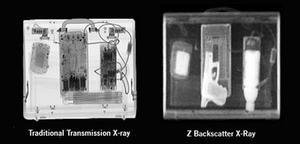ASIS International 2011X-ray machine operators lack proper training, says explosives expert
Even with the increasing ubiquity of X-ray machines and other explosives detection devices, many dangerous contraband items are still passing through security checkpoints at government buildings, airports, and businesses as a result of poor training; in 2009 Government Accountability Office (GAO) investigators successfully smuggled bomb making materials into ten high-security federal buildings

It's too easy for contraband to clear x-ray operators // Source: defenseindustrydaily.com
Even with the increasing ubiquity of X-ray machines and other explosives detection devices, many dangerous contraband items are still passing through security checkpoints at government buildings, airports, and businesses as a result of poor training.
For instance, in 2009 Government Accountability Office (GAO) investigators successfully smuggled bomb making materials into ten high-security federal buildings. The undercover operatives were then able to find and enter a bathroom and assemble the bombs uninterrupted. In addition, the agents were even able to carry the bombs around the building without being stopped.
“One of the concerns we had is that in a number of the locations, three or four of them, guards were not even looking at the [X-ray] screens that would show materials passing through. If a guard had been looking, they would have seen materials not normally brought into a federal building,” said Mark L. Goldstein, who led the investigation.
According to Stuart “Buddy” Eanes, director of EOD/Hazmat at Explosive Countermeasures International, Inc., most personnel who man X-ray machines or security checkpoints are not properly trained and therefore inadvertently allow weapons or explosives to pass through simply because they do not know what they are looking for.
In an interview at the ASIS 2011 security conference in Orlando, Florida, Eanes said regardless of what type of facility he visits – military installations, private businesses, or government facilities – “it doesn’t make any difference. All the places I go to, a lot of them federal facilities, people just haven’t been trained.”
“Whether it’s a ladies purse or my pocket, there’s a lot of stuff in there and if you’re looking for an improvised explosive device with all this stuff in there, what are you actually looking for?” Eanes added. “That’s one of the biggest problems we have with X-ray machines is training people on the actual items.”
Eanes explained that especially with private security guards or police officers, improper training is often the result of a lack of time or money.
“Well, where’s the time for training? Where’s the money coming from? You put someone in a class, he’s coming off a post, so now he’s tired so he’s not really in a learning environment, or he gets done training and he has to go on post or he’s going to two or three jobs to make a living,” Eanes said. “What do you think the outcome is going to be with a situation like that? He’s not going to be able to do what you’re paying him to do, and that’s the problem.”
Eanes is not optimistic about the future of X-ray operator training procedures.
“I really don’t see this changing anytime in the near future, unless we start having a lot of incidents here in the United States. When that happens, then people will begin thinking about training, testing their operators, and maybe we’ll improve. Until then, I don’t expect it to happen.”
